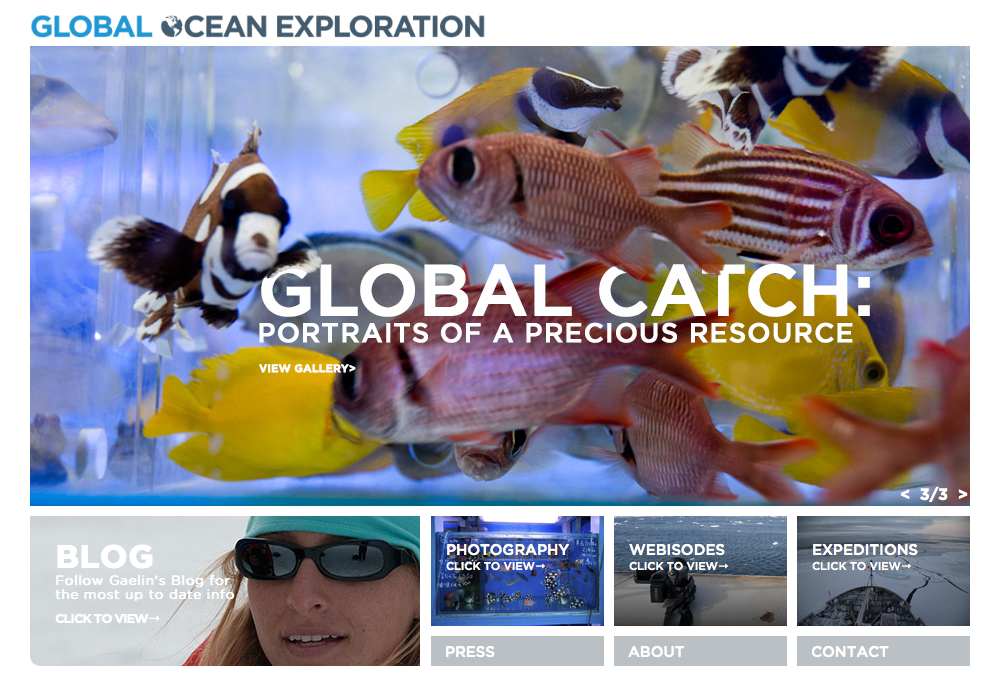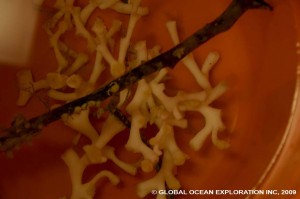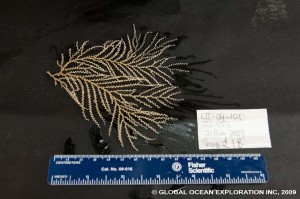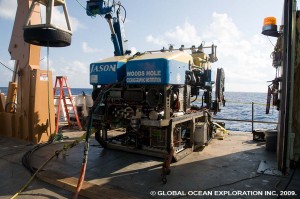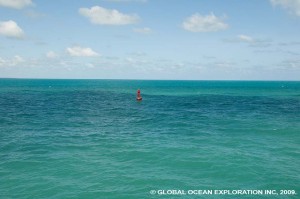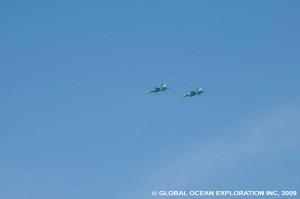.

.
No ocean going expedition is without its risks and I learned firsthand about this on August 23rd. I woke up not feeling great but with the change in environment, schedule and food, I didn’t think much of it. Plus I am young, fit and healthy…nothing could medically happen to me out here except maybe some kind of physical injury. But as the day progressed and I felt worse and worse, I found out that I could not have been more wrong as, by 8pm, I found myself being medevaced off of the ship.
In the early evening, it was determined that I needed to get off the ship and to a hospital. Fortunately, we were close to shore (approximately 30 miles- the closest I have ever been on an expedition) and a Coast Guard Helicopter was dispatched from New Orleans. Right around sunset, the chopper arrived, the swimmer was lowered and I was soaring in a basket over the Gulf of Mexico being lifted into the chopper. The ride took about an hour and we landed on the roof of the hospital where they began to administer care. It turned out that I had a major internal bleed from my stomach and had lost over one third of my blood by the time I had gotten there. I was very lucky to be in such close proximity to land. The crew of the NOAA Ship Ronald H. Brown was incredible in how quickly they got me off of the ship and I am forever thankful for their swift action.
After a few nights in the hospital in New Orleans, I am back home recuperating. The docs say I should be back ready to go soon and this should not happen again. I am definitely bummed that I missed the rest of the expedition but hopefully will be able to join them again next year. Despite the seriousness of this situation, it has only increased my desire to get back out there and do more in my exploration of the ocean and the planet. Life is fragile but as my mantra has always been, “if you are not living on the edge, you are taking up too much room…â€
Heartfelt thanks to the crew of the NOAA Ship Ronald H. Brown, the science team of the Lophelia II cruise, the US Coast Guard (especially the crew of the helicopter from the CGAS New Orleans), and the docs and nurses at Tulane Medical Center.
.

In the basket about to be pulled into the helo

The Coast Guard Swimmer being hoisted back into the helo.
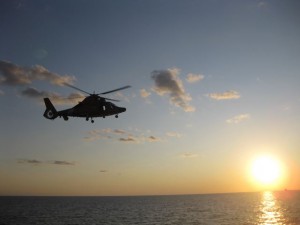
.

Inside the helo on the way to New Orleans…
(Thanks to everyone on the ship for the great pictures)
.

